MCQ ON ENZYMES AND HORMONES INVOLVED IN DIGESTION OF FOODS / ENZYMES AND HORMONES INVOLVED IN DIGESTION OF FOODS class 11 for NEET | ENZYMES AND HORMONES INVOLVED IN DIGESTION OF FOODS class 11| MCQ ENZYMES AND HORMONES INVOLVED IN DIGESTION OF FOODS with Answer | Check the below NCERT MCQ question for class 11Biology based on the with Answers.
MCQ on ENZYMES AND HORMONES INVOLVED IN DIGESTION OF FOODS class 11Biology with answers were prepared based on the latest pattern. We have provided class 11 Biology MCQs question with Answers to help students understand the concept very well.
MCQ ON ENZYMES AND HORMONES INVOLVED IN DIGESTION OF FOODS is useful for NEET / CSIR / UGC / CBSE / ICSE / AIIMS / EXAM / AFMC EXAM / STATE LEVEL MEDICAL EXAM/ KVS PGT BIOLOGY / NVS PGT BIOLOGY EXAM 2023-2024 ,2025
INTRODUCTION:-
ENZYMES AND HORMONES INVOLVED IN DIGESTION OF FOODS:-
Enzymes:-
Salivary amylase:- The Saliva contains enzyme salivary amylase which hydrolysed starch into maltose ,isomaltose and limits dextrin.
Pancreatic amylase :- It is present in pancreatic juices , it hydrolysed more starch and glycogen to dextrin and latter to double sugar maltose isomaltose and limits dextrin.
Lactase hydrolysed the lactose into glucose and galactose.
Sucrase breaks sucrose into glucose and fructose.
Maltase breaks maltose to glucose.
Trypsinogen : it is pancreatic juices which converted into trypsin break protein into peptones and protease.
LARGE INTESTINE:-
The large intestine is shorter than the small intestine .It is called large intestine as it is wider than the small intestine.It is aaranged around the mass of small intestine in the form of a question mark ? .It is about 1.5 metres long .It lacks villi and microvilli .It shows three region :-
Caecum :- The caecum is small blind sac coming of the colon at the latter’s junction with the ileum.
The caecum bears a short slender worm like projection called the Vermiform appendix.
Colon:- It is wider than small intestine.It gives succulent apperance due to a series of constrictions.
The colon shows four region:-
Ascending colon
Transverse colon
Descending colon
Longitudinal colon
The bend between the ascending and the transverse colon is called right colic fixure or hepatic flexure and that between transverse and descending colon is termed left colic flexure or splenic flexure.
Rectum:- It follow the colon.It is about 15 cm to 20 cm long.The rectum has longitudinal folds and large blood vessels.
Function:- The large intestine mainly aids in the absorption of water , formation, temporary storage and elimination of faeces and excretion.
The colon of bacteria produce vitamin B and K which are absorbed.
SMALL INTESTINE:-
The small intestine is distinguisible into three regions a C shaped duodenum a long coiled middle portion jejunum and highly coiled ileum . Dopening of stomach into duodenum is guarded by pyloric sphincter ,
Ileum opens into large intestine.
In duodenum glands are also present in submucosa .
The innermost layer lining the lumen of the elementary canal is the mucosa .
This layer forms irregular force in the stomach and small finger like folding called villi in the small intestine.
The cells lining the villi produces numerous microscopic projection called microvilli giving a brush border appearance.
These modification increase surface area enormously. Villi are supplied with a network of capillaries and a large lymph vessel called lacteals.
STOMACH:-
The stomach located in the upper left portion of the abdominal cavity has four major parts a cardiac portion into which the oesophagus opens
, fundic region which small dome like upper part that projects above the cardiac aperture , it oftens contain gas or air.
A pyloric portion which opened into the first part of a small intestine, it is a right narrow lower portion of the stomach, it comprises a wider pyloric antrum and narrow pyloric canal,
Body:- it is a main middle region of the stomach
In a surface of a stomach has numerous folds the gastric rugae . These folds by unfolding let the stomach expands to accommodate large meal about 2 l of food and water
Different foods remain in the stomach for different durations carbohydrate for only one or two hours, protein for up to 3 hours and fats for 3 to 6 hours .
Thus a fat rich food should be taken if the next meal is expected to be available after long time.
An athletes should take carbohydrate rich diet before competition.
When the stomach is empty its contraction stop and a period of rest begins. After a few hours contraction restart causing the feeling of hunger.
Ruminants have a large compound stomach.
These are mammals that chewed the cud.
The stomach of cattle buffaloes goats sheep mammals consists of four chambers – rumen , reticulum , omasum , abomasum.
The stomach of camels and dear lacks omasum.
Rumen is the largest chamber and receives oesophagus. In this chamber food undergoes mechanical and chemical breakdown.
MCQ ON ENZYMES AND HORMONES INVOLVED IN DIGESTION OF FOODS class 11 for NEET/KVS PGT BIOLOGY / NVS PGT BIOLOGY EXAM 2023-2024,2025
1. The enzyme that is not present in succus entericus is
(a) lipase
(b) maltase
(c) nuclease
(d) nucleosidase
Ans (c) nuclease
2. The initial step in the digestion of milk in humans infants is carried out by
(a) lipase
(b) trypsin
(c) rennin
(d) pepsin
Ans. (c) rennin
3. Where do certain symbiotic microorganisms normally occur in human body
(a) caecum
(b) colon
(c) rectum
(d) all the above
Ans. (a) Caecum
4. The gastrointestinal hormone which stimulates insulin secretion is
(a) GIP
(b) CCK
(c) gastrin
(d) secretin
Ans.(d) GIP
5. One of the constituent of the pancreatic juices which is poured into the duodenum in human is
(a) trypsinogen
(b)chymotrypsin
(c) trypsin
(d) enterokinase
Ans.(a) trypsinogen
6. Which of the following cells produce HCl ?
(a) beta cells
(b) alpha cells
(c) oxyntic cells
(d) chief cells
Ans.(c) oxyntic cells
7. Bile salts act as activator of which enzyme?
(a) pepsinogen
(b) trypsinogen
(c) lipase
(d) pancreatic amylase
Ans.(c) lipase
8. Vitamin D is produced in human beings
(a) muscles
(b) nerves
(c) skin
(d) bone marrow
Ans.(c) skin
9.A gland not associated with the alimentary canal is
(a) pancreas
(b) adrenal
(c) liver
(d) salivary gland
Ans. (b) adrenal
10. Kupffer cells are present in
(a) large intestine
(b) duodenum
(c) stomach
(d) liver
Ans. (d) liver
11. A person who is on a long hunger strike and is surviving only one water, will have
(a) less amino acids in his urine
(b) more glucose in his blood
(c) less urea in his urine
(d) more sodium in his urine
Ans.(c) less urea in his urine
12.In the homeostatic control of blood sugar level, which organs function respectively as modulator and effector ?
a) liver and islets of Langerhans
b) hypothalamus and liver
c) hypothalamus and islets of Langerhans
(d) islets of Langerhans and hypothalamus
Ans . (c) hypothalamus and islets of Langerhans
13. Secretin and cholecystokinin are digestive hormone.They are secreted in
(a) pyloric stomach
(b) duodenum
(c) ileum
(d) oesophagus
Ans.(b) duodenum
14. Enterokinase is secreted by
(a) intestinal glands
(b) pancreatic duct
(c) liver
(d) slavery gland
Ans. (a) intestinal glands
15. Glisson capsule is found in
(a) rectum
(b) jejunum
(c) ileum
(d) liver
Ans.(d) liver
ALSO READ:-
● YOU CAN WATCH BIOLOGY SIR Youtube channel
16.The study of structure and function of the viscera is
(a) splanchnology
(b) apiculture
(c) hausteria
(d) none of the above
Ans.(a) splanchnology

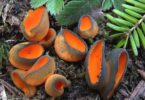
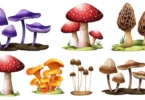
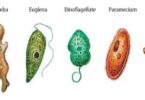
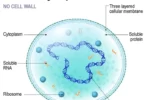
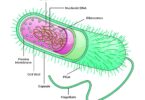
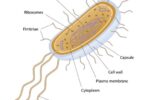
Leave a Comment